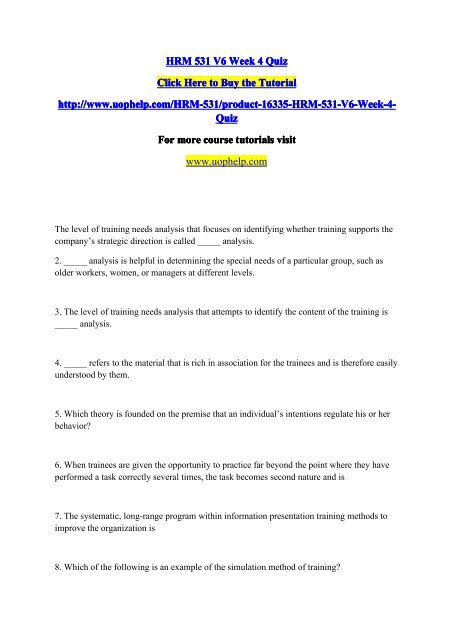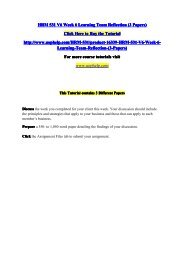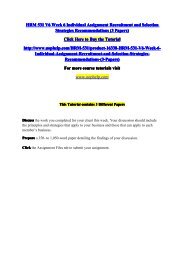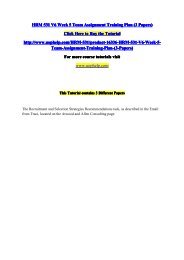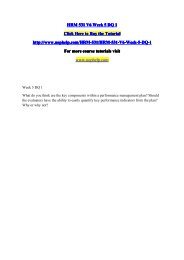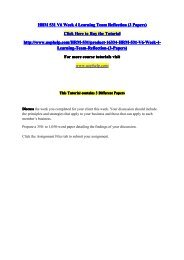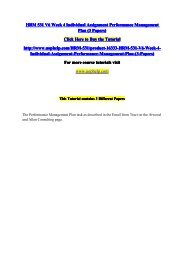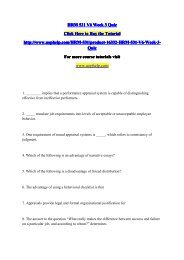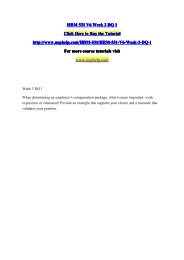HRM 531 V6 Week 4 Quiz/uophelp
For more course tutorials visit www.uophelp.com The level of training needs analysis that focuses on identifying whether training supports the company’s strategic direction is called _____ analysis. 2. _____ analysis is helpful in determining the special needs of a particular group, such as older workers, women, or managers at different levels. 3. The level of training needs analysis that attempts to identify the content of the training is _____ analysis. 4. _____ refers to the material that is rich in association for the trainees and is therefore easily understood by them. 5. Which theory is founded on the premise that an individual’s intentions regulate his or her behavior? 6. When trainees are given the opportunity to practice far beyond the point where they have performed a task correctly several times, the task becomes second nature and is 7. The systematic, long-range program within information presentation training methods to improve the organization is 8. Which of the following is an example of the simulation method of training? 9. Which of the following is an example of an on-the-job training method? 10. In evaluating training programs, it is important to distinguish _____ from data-collection methods. 11. The impact of training on _____ is the most significant, but it is the most difficult effect to demonstrate. 12. The evaluation phase is one phase of the process for effective training to occur. Which of the following is not a part of the evaluation phase?
For more course tutorials visit
www.uophelp.com
The level of training needs analysis that focuses on identifying whether training supports the company’s strategic direction is called _____ analysis.
2. _____ analysis is helpful in determining the special needs of a particular group, such as older workers, women, or managers at different levels.
3. The level of training needs analysis that attempts to identify the content of the training is _____ analysis.
4. _____ refers to the material that is rich in association for the trainees and is therefore easily understood by them.
5. Which theory is founded on the premise that an individual’s intentions regulate his or her behavior?
6. When trainees are given the opportunity to practice far beyond the point where they have performed a task correctly several times, the task becomes second nature and is
7. The systematic, long-range program within information presentation training methods to improve the organization is
8. Which of the following is an example of the simulation method of training?
9. Which of the following is an example of an on-the-job training method?
10. In evaluating training programs, it is important to distinguish _____ from data-collection methods.
11. The impact of training on _____ is the most significant, but it is the most difficult effect to demonstrate.
12. The evaluation phase is one phase of the process for effective training to occur. Which of the following is not a part of the evaluation phase?
- No tags were found...
Create successful ePaper yourself
Turn your PDF publications into a flip-book with our unique Google optimized e-Paper software.
<strong>HRM</strong> <strong>531</strong> <strong>V6</strong> <strong>Week</strong> 4 <strong>Quiz</strong>Click Here to Buy the Tutorialhttp://www.<strong>uophelp</strong>.com/<strong>HRM</strong>-<strong>531</strong>/product-16335-<strong>HRM</strong>-<strong>531</strong>-<strong>V6</strong>-<strong>Week</strong>-4-<strong>Quiz</strong>For more course tutorials visitwww.<strong>uophelp</strong>.comThe level of training needs analysis that focuses on identifying whether training supports thecompany’s strategic direction is called _____ analysis.2. _____ analysis is helpful in determining the special needs of a particular group, such asolder workers, women, or managers at different levels.3. The level of training needs analysis that attempts to identify the content of the training is_____ analysis.4. _____ refers to the material that is rich in association for the trainees and is therefore easilyunderstood by them.5. Which theory is founded on the premise that an individual’s intentions regulate his or herbehavior?6. When trainees are given the opportunity to practice far beyond the point where they haveperformed a task correctly several times, the task becomes second nature and is7. The systematic, long-range program within information presentation training methods toimprove the organization is8. Which of the following is an example of the simulation method of training?
9. Which of the following is an example of an on-the-job training method?10. In evaluating training programs, it is important to distinguish _____ from data-collectionmethods.11. The impact of training on _____ is the most significant, but it is the most difficult effectto demonstrate.12. The evaluation phase is one phase of the process for effective training to occur. Which ofthe following is not a part of the evaluation phase?


